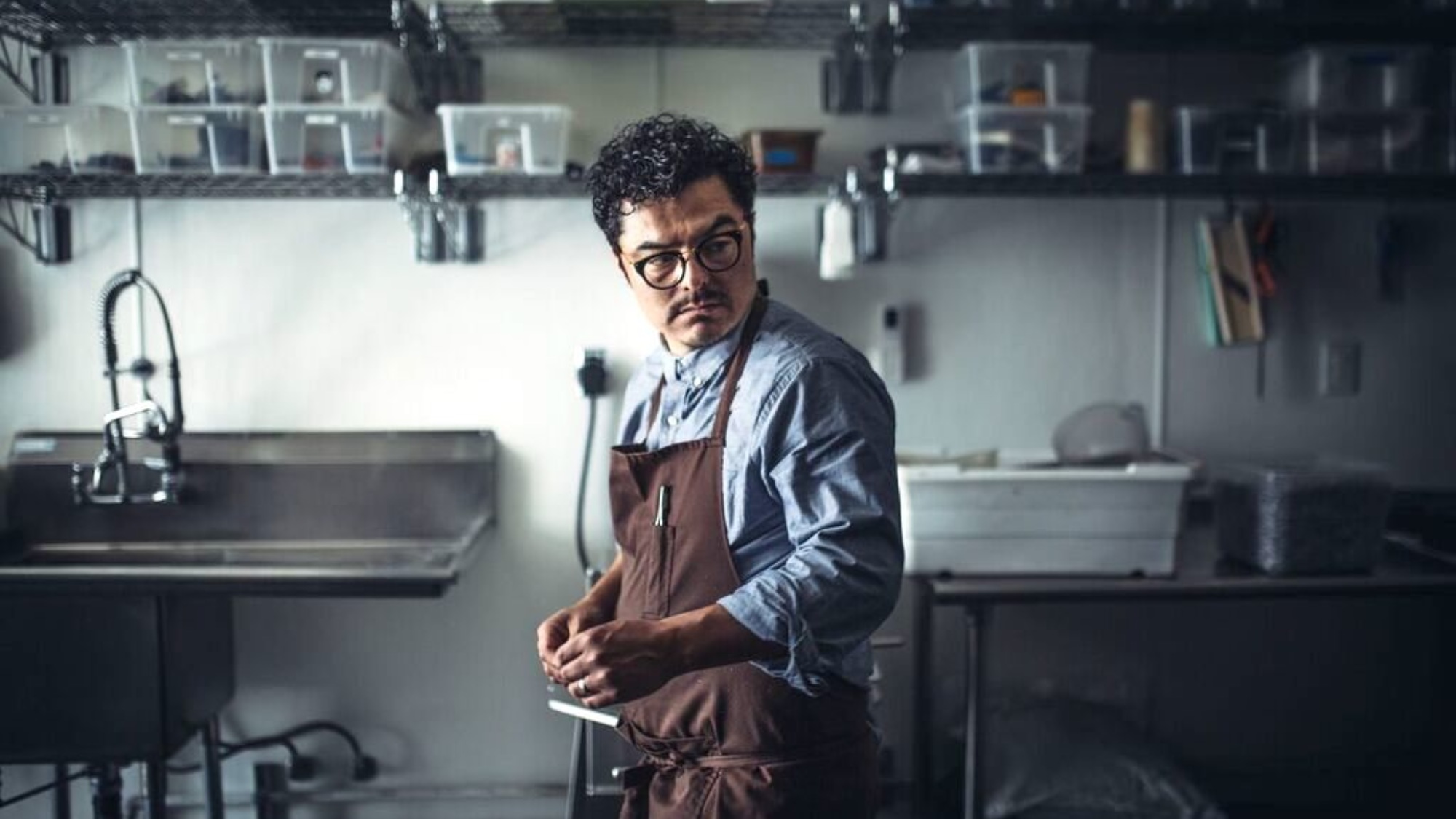
Carlos Salgado Sees the Future For Taco María, And It Will Be More Focused
When the Michelin guide returned to Southern California in 2019, Taco María was the only Mexican restaurant to receive a Michelin star — stunning chef-owner Carlos Salgado. After all, a chef with sights set on such awards doesn’t often end up in Orange County.
Now, after eight years, Taco María has established itself as a destination for gourmands, and it’s hard to overstate how instrumental the restaurant has been in Alta California cuisine movement. “I’m becoming aware that I’m part of the Old Guard,” says Salgado. “I was recently reminded that when I started, it wasn’t common for Mexican restaurants to be so personal and have a point of view.”
Less than a year after the Costa Mesa restaurant received a Michelin star, the pandemic hit. That March, Salgado decided that for the safety of his staff and customers, the restaurant would close — even preceding Los Angeles County’s, then Orange County’s, order that all restaurants switch to takeout only. Today, all dine-in options at Taco María are at outside tables. “We’re doing this extremely safely. We can afford to continue to try to be part of the solution instead of part of the problem,” he says.
We sat down with Salgado to talk about pivots, successes, and to see how he’s taking Taco María into the “new normal.”
This interview has been lightly edited for clarity and length.
RESY: So, how is the restaurant doing?
Salgado: I am grateful for what we have; we fared relatively well. Unfortunately, we saw people in our professional and social networks suffer health consequences. Obviously, it was financially devastating for the restaurant for myself and my wife, but we didn’t lose anyone for payroll reasons. We did have a lot of turnover because of the way these things are: the natural cycles of people changing careers, moving home or on to the next thing, or burning out. Health-wise, everyone’s well, and we managed to reopen the restaurant at about 40% capacity.
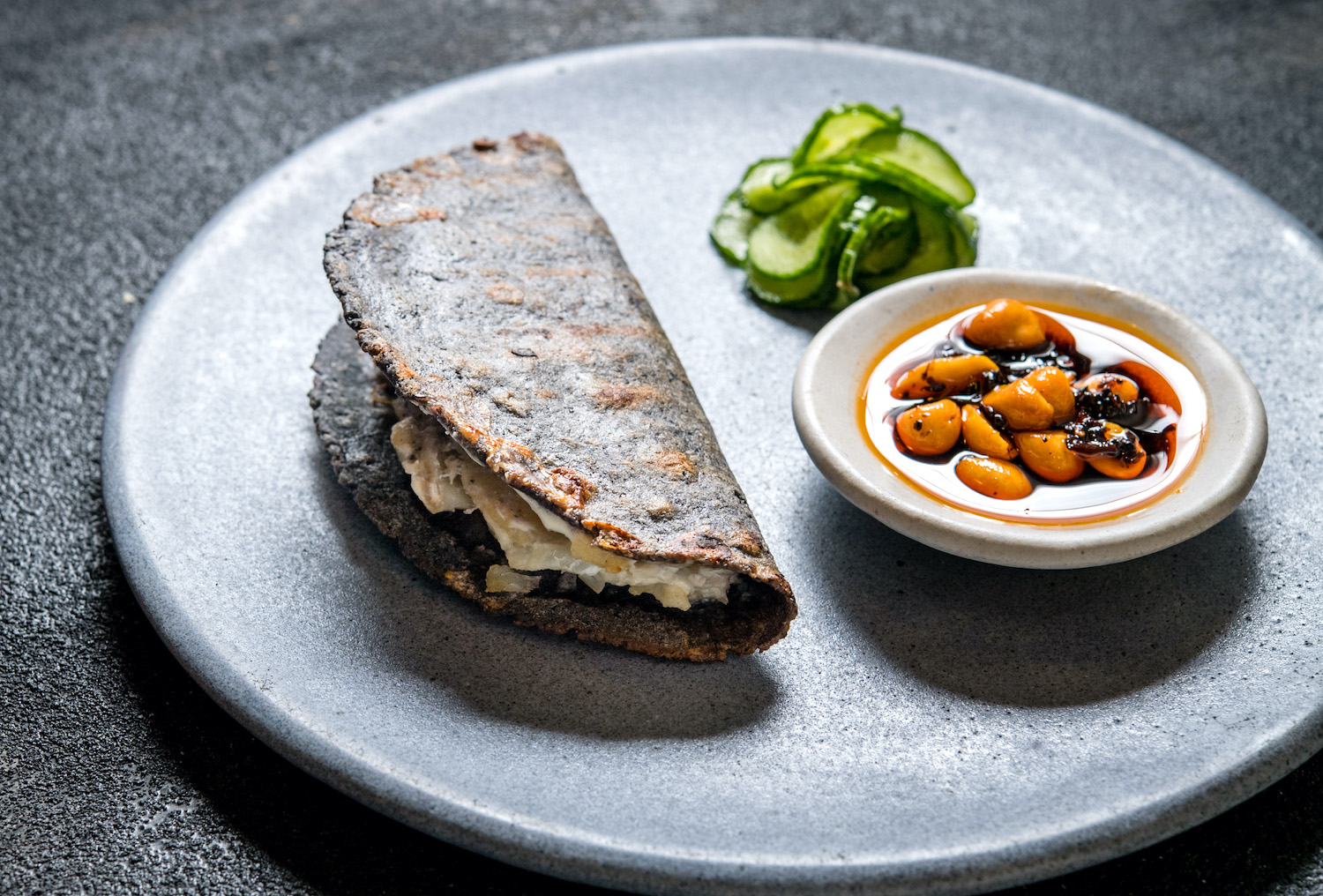
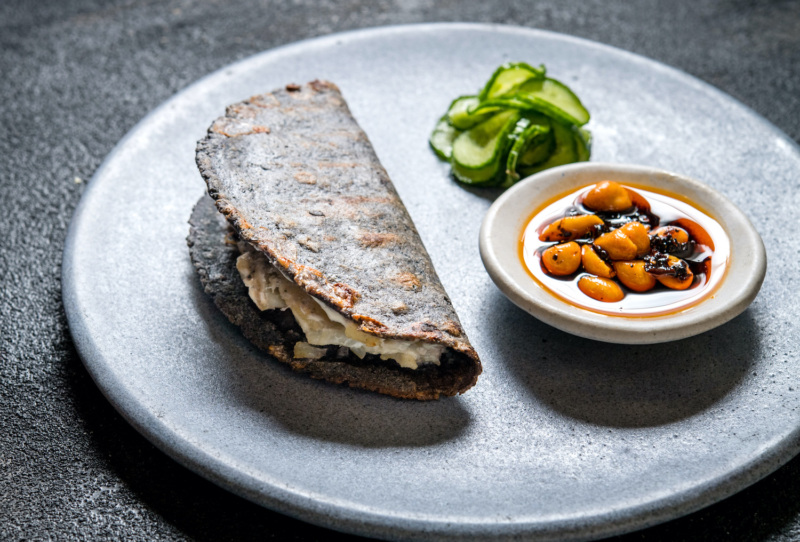
How has Taco María evolved its format?
Now we’re doing dinner only, five days a week, so it’s a smaller crew. The whole operation has been scaled down as we focus on an accessible fine-dining dinner menu. We were previously prix fixe only in the evenings, and we’re aspiring to the same level of service. But the menu is now an a la carte sort of selection, with starters and then tacos, which is the entree course that service is built around — with tortillas, salsa and accompaniments. It’s meant to be like eating in a Mexican household. That’s been well-received, so that’s great.
What about your customers? Have they evolved over the past couple years?
People have been really understanding, accommodating, and supportive. And then there are others who are ready to go back to what they enjoy. You know, from the “before” times, as we call them, right? But largely, our customers have been really supportive, and the general public has been enthusiastic about the new [a la carte] format. We have regulars who come back to check in, taking away meals for their families. It’s great getting to see a bunch of faces we hadn’t seen in a while, and having great conversations with them. You know people have been a lot more vulnerable and wanting to connect during that time of separation. So there were certain days where we really built a lot of closeness with our customers
And the next day, you might have a really angry, incredulous person who didn’t understand why we didn’t have the old menu, why we couldn’t seat them inside or give them exactly what it is that they wanted when they wanted.
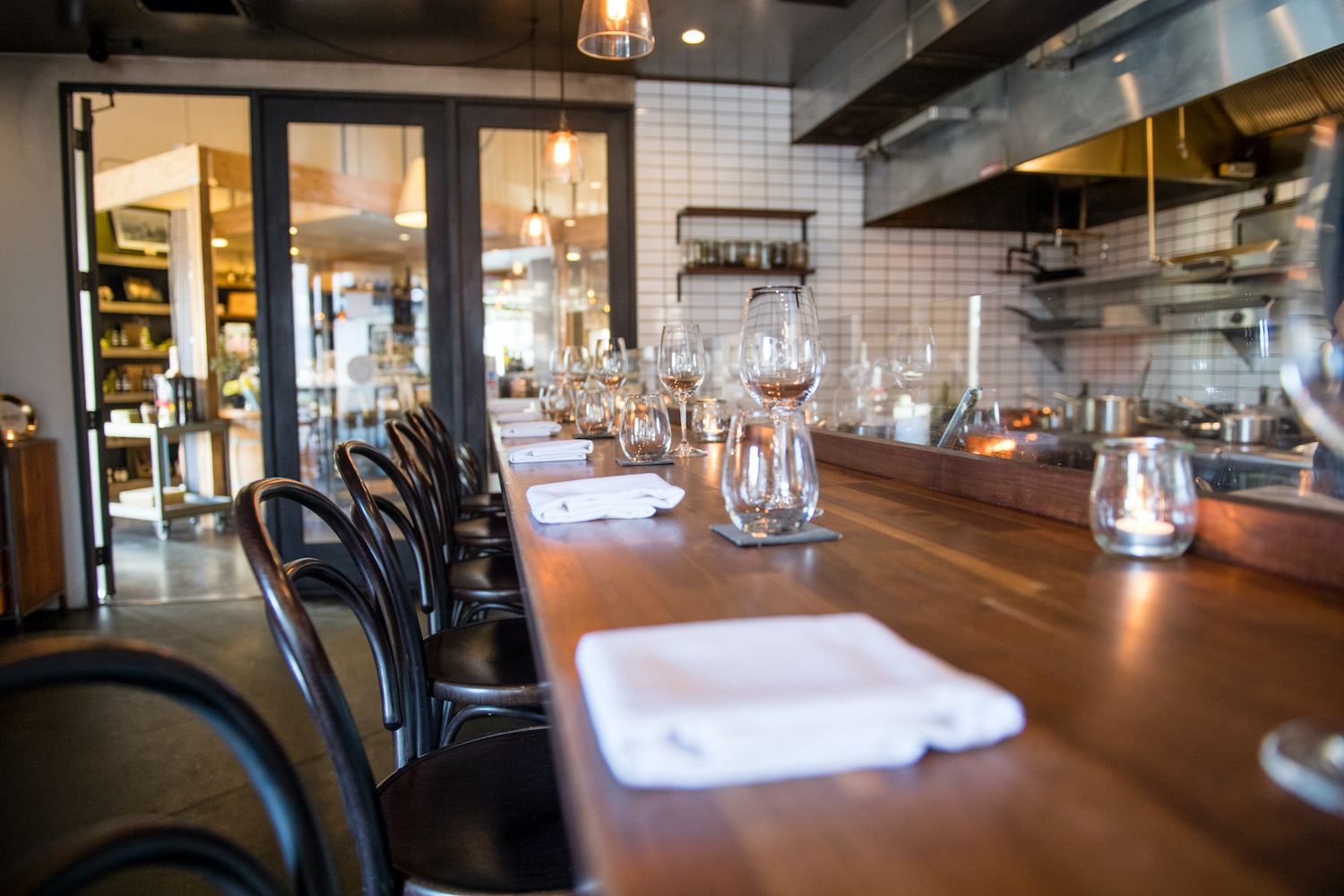
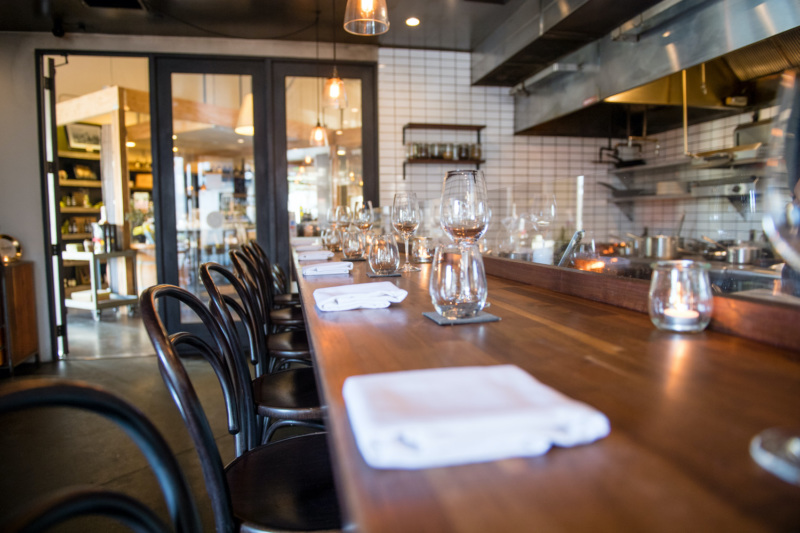
Let’s talk about recognition. How surprised (or unsurprised) were you about receiving a Michelin star?
I’m extraordinarily grateful. I worked in fine dining and the higher echelons for such a long time. For me, opening Taco María was like coming home. It was about coming home to my family, exploring my identity, and setting myself up to mature into my own understanding of Mexican Americanism.
And I really didn’t ever expect that Los Angeles, food media, or the dining public would cast a glance out here. I certainly never expected that Michelin would return to Los Angeles or that they might expand and reach out further into this smaller market and give us a star. I mean, that star was just like completely shocking — and it was the first time in Orange County. I felt like we were doing good work, but I also felt like it was recognition for the years of work before that.
Then, COVID happened. How has all of this changed your perspective of the industry, and how you go into the future?
I think I knew instinctively that fine dining was going to change. It was only ever going to change with the big societal themes of economic inequality and workplace concerns. And this big public health issue became the biggest financial or economic challenge that a restaurant could possibly endure, right? A total upheaval and a disruption of all the norms, all of the supply chains — and not to mention customer demands and expectations. It was just total chaotic upheaval.
I don’t mind telling you that I think that returning to lunch and brunch, being open six days, or me working all day seven days a week, and asking my sous chefs to work extremely long hours and maintaining double the staff, plus stocking my kitchen with the supply problems that persist in our industry … like on every level … that doesn’t sound appealing or responsible to me.
So I think we’re going to continue with a more narrowly focused, better-crafted concept. I want Taco María to be like an accessible destination or celebration restaurant.
How has your staffing been, and how has the pandemic shaped your view on that?
I think people in leadership positions at fine-dining restaurants smartly understand that for restaurant owners, or in my case, chef-owners, it’s going to be really challenging to continue to operate the business at a profit, which is obviously necessary.
I’m not one of those people who believes that people are lazy, people are entitled, and that they don’t want to work and would rather collect unemployment. Members of this industry deserve their benefits. So it’s created challenges. I think large portions of our worker community are reassessing at what level or how much they want to continue to work.
I hope that the realizations we’ve had about what was broken about our industry can lead to real long-term change. Something that’s equitable for everyone, including small business owners. I feel that chef-restaurateurs are closer in status and classification to the employees themselves than they are to the CEOs that are being subject to deserved scrutiny at the moment. So I’d like to see a bit more solidarity between the small business owners and the employees, as we continue to reimagine and reform our industry.

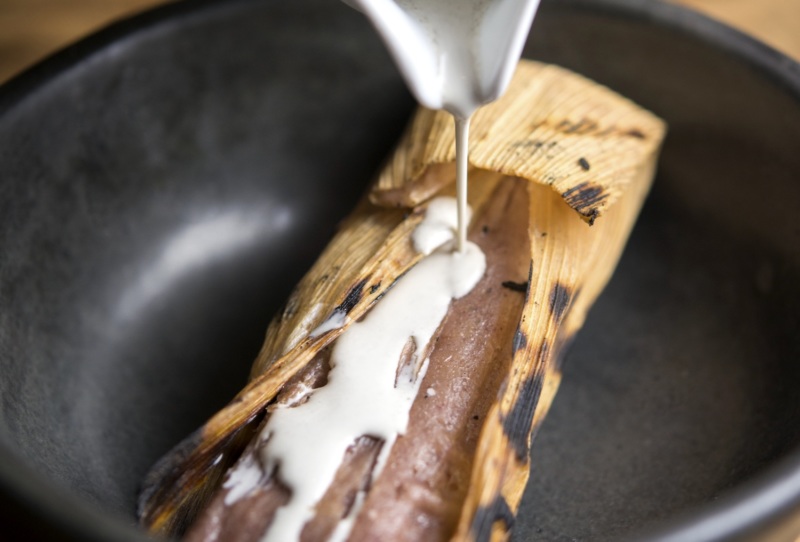
Any thoughts about the ongoing evolution of Mexican food in Southern California?
I grew up in an Americanized-combo-plate, crispy-taco, rice-and-beans Mexican restaurant. I watched my parents suffer the indignity of people asking for the same basic flavors all the time and complaining about the pricing, and looking down on it because it was Mexican food. If I participated in carving out a space where Mexican food is revered as being something more than those sanitized versions, then it’s a huge point of pride.
Now it seems like the environment that we’re in, Mexican chefs of my generation and the next have the confidence to build a platform for different styles of Mexican food. And there’s more of an interest and enthusiasm for different flavors — and that’s extremely exciting. I can’t even keep up with all of the restaurant openings, personal projects, and all the different influences that these younger chefs bring to bear in their styles of cuisine. I guess I feel like this is how it should be, or should have been all along. I feel like L.A. and Orange County Mexican and Mexican American chefs have really entered into a period of confidence and exuberance that’s very inspiring.
I am often still asked to describe my cuisine, and 10 years in, I don’t have an elevator pitch for it, or even a categorization. It continues to be like an exploration of my own identity and Mexican Americanism. So it’s just very exciting to watch others doing the same, whether it’s merging different types of cuisine or focusing on one particular dish, interpretations of a particular dish or bringing different regions of Mexico here. I’m educated every day by what the current generation of Mexican and Mexican American chefs are doing, so it’s really fun.
Also, the proliferation of heirloom corn, corn tortillas, flour tortillas, corn products, is really great to see. The conversation regarding Mexican ingredients, whether it’s huitlacoche, heirloom corn, or chicatana ants or escamoles. People are really excited about them, so now products of Mexico have this luxury status that they’ve deserved for a long time. I’m grateful and enthusiastic as anyone else for the new flavors to explore.
Esther Tseng is a food, drinks and culture writer. She has contributed to The Los Angeles Times, Eater, Food & Wine, Civil Eats and more. Follow her on Twitter and Instagram. Follow Resy, too.
















